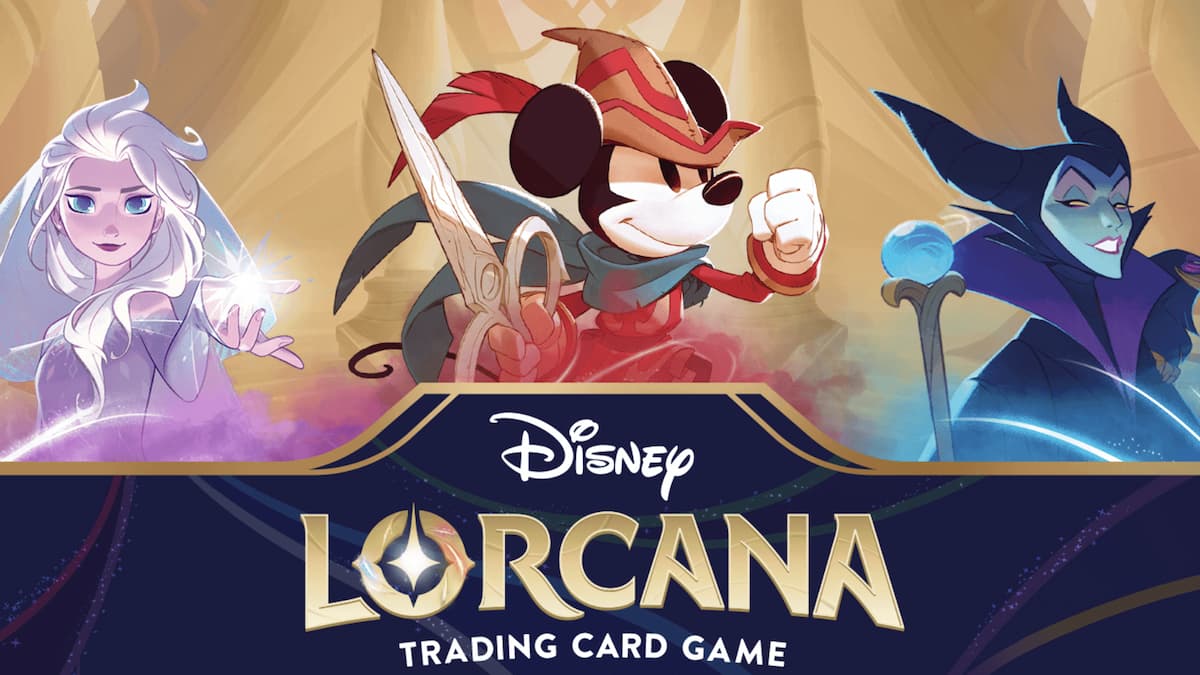Disney has jumped on board the trading card game train and as you’d expect, Lorcana allows players to collect and compete with their favorite Disney characters from Stitch to Mickey Mouse himself. Collecting the cards is fun, but playing with them against other players is even better. So how do you play? What are the rules, and are there any strategies you can use to give you an advantage? Read on to find out.
The basics
The way Lorcana plays is pretty much the same as your standard card game, maybe a little too similar to other games, in fact. But anyways, players, known in-game as Illumineers, take alternating turns, although, unlike other card games, the purpose isn’t to drain the opposing side of life points or something like that, but rather to build up lore. Lore is essentially a points system, each Illumineer starts at zero and must summon Disney characters and items, known as Glimmers, in order to gain more. The game ends when one of the sides has reached the goal of 20 lore.
Building a deck
Each player must have 60 cards in their deck and they will usually contain a variation of character, item, and action cards. The same card cannot appear more than four times in a single deck, although variations of a character do not count as the same. For example, Elsa, Spirit of Winter, and Elsa, Snow Queen are both the same character but count as a different card so you can have four of each.
You can also only have two different ink types in a deck. There are six ink types in total and ink is used to pay the cost of playing cards and using abilities. We’ll go into more depth on ink later on.
The rules
To begin, players must shuffle their decks and set their lore counter to zero. Then decide who is to go first, (this can be done by flipping a coin) and draw seven cards each from the deck. After this, players can look at their cards and decide whether they want to return any to the bottom of the deck and replace them with new cards from the top. This can be done once per game on each side.
Every turn begins the same way
Ready: each player must ready their cards by turning them upright.
Set: they then set the conditions, which involves moving any cards that were put into play last turn up with the rest of the items and characters, allowing them to be used this turn. Players can also activate effects depending on whether they have any relevant cards in play.
Draw: Finally the player must draw a card from the top of their deck and add it to their hand.
The main phase
The main phase is where players can activate more cards, put cards in the inkwell, send characters on quests to gain lore, or use the abilities of cards already in play. Players can also go on the offensive and challenge their opponent’s characters in order to slow their progress.
Activating cards
Activating cards is self-explanatory, it simply means bringing out more glimmers. The three types of cards that can be activated are characters, items, and actions. Characters cannot be used on the turn they are brought out. Item cards can be used immediately and action cards activate immediately once played, triggering whatever effect the card describes.
Inkwell
Playing a card requires paying the ink cost. Ink is a resource, (similar to mana in Magic: The Gathering) that allows for cards to be used. Players must sacrifice cards to the inkwell in order to build up ink, this can be done once per turn and once a card has been placed in the inkwell it cannot be brought back. Most cards can be used as magical ink, you’ll be able to tell by looking at the top left for the golden swirl. If a card has it, that means it can be sent to the inkwell and used as ink to play other cards.
Each card has a number in the top left that tells you how much ink it requires to activate, you must expend that number of cards from the inkwell in order to use that card’s effect. Do this by turning the cards sideways, it must stay that way until it is readied next turn. Each card in the inkwell is worth one regardless of the number it had in the top left.
Building up ink is a smart move as it allows you to do more each turn, so it’s definitely worth sacrificing a card per turn in order to activate more abilities and effects from your cards already on the field.
Quests
Questing allows you to gain lore, only character cards can do this and when you choose to do so, the card must be exerted (turned on it’s side). This will give you lore points equal to the amount of diamond icons shown on the card.
Challenges can slow your opponent’s progress by attacking their characters. To do this, exert your character card by turning it on its side, it can only attack opponents’ exerted cards. Both characters will deal damage to each other based on their strength value (found in the star icon). If the damage is greater than a character’s willpower (shield icon) then that character is banished and can’t be used for the rest of the game.
There’s even more
Obviously, there’s even more to delve into with Lorcana, but that’s something you’ll pick up as you play more games. Hopefully, for now, this guide has given you the knowledge you need to build your own deck, win a few games, and develop your own strategies, but as always, the best way to learn is to get out there and play.

